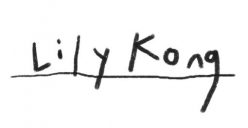Last day of lockdown woohoo!
This week, I have been working on the writing. It is going to be called Drawing Fast, Writing Loose, in which explores working fast in drawing and writing in the age of internet/social media.
Here are some notes from the book Thinking fast and slow, which has some very interesting points about the way we think.
27 Nov notes
Thinking fast and slow
Podcast – What you will Learn
Fast thinking (system 1) – the gut, the intuition, operates quickly and automatically thinking with zero or very little control, snaps it to actions and make assumptions.
A lot of these emotional and feelings based things happen as snap judgements
Also after you become more competent or after you practice something a lot, something may started to shift to system 1 cause you are more familiar with it and you don’t have to think much about it.
Associative thinking becomes effortless.
Slow thinking (system 2) – demands cognitive effort. Invest or expel energy.
Switching your brain on a different mode, blocking everything else and just focus on one thing deeply
System 2 is pretty lazy —> lots of efforts to invest into
Switching task is effortful – takes time and energy in terms of cognitive capacity to realign to the problem you are focusing
Becos you are investing/spending more cognitive resources on thinking bout things deeply in system 2, you are more likely to give into temptations like deviating from your diet, overspending on purchases, reacting aggressively to request or propagations.
Normally, if you weren’t spending much energy towards system 2, you will be more able to control your impulses.
System 1 uses association and metaphor to produce a quick and dirty draft of reality, which System 2 (slow deliberate thinking) draws on to arrive at explicit beliefs and reasoned choices.
System 1 proposes, System 2 disposes.
System 2, in addition to being more deliberate and rational, is also lazy. And it tires easily. (The vogue term for this is “ego depletion.”) Too often, instead of slowing things down and analyzing them, System 2 is content to accept the easy but unreliable story about the world that System 1 feeds to it.
Podcast- part 1
S1 likes to jump to conclusion and look at the things around it. Keep you/maintained updated and think if this is normal. detects things straight from the norm – constantly assessing things around you.
Associating things with others.
Like “Noah’s Ark” vs “Mose’s Ark” – they both have a biblical context – associating
Jump to conclusions than doing the work itself
If the cost of making a mistake is accessible, or if it takes a lot of effort, then ok S1
Like Interviews – judging on how people interview, dress and speak, instead of how they work in real life
“You are skipping all the information that you don’t see. —> what you see is all there is.”
The central image/ simplified message /no background props/ minimum choice of colours —> ease readers to jump to a conclusion —> less cognitive thinking—> less effort —> people are lazy —> easier to attract attention —> easier to keep you in the loop becos it can be understood effortless

